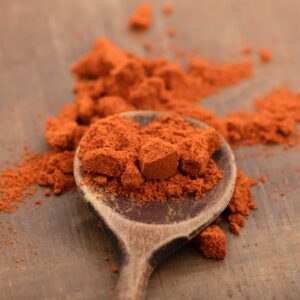Introduction
Chewing gum is one of the most popular confectionery items around the world. Whether used for freshening breath, relieving stress, or simply as a habit, gum has been a part of human culture for centuries. However, have you ever stopped to wonder what chewing gum is actually made of? While it may seem like a simple mix of sweeteners and flavorings, modern chewing gum contains a complex blend of ingredients designed to provide its signature chewiness and long-lasting taste. Let’s dive into what really goes into chewing gum and whether it’s as harmless as it appears.
The Main Components of Chewing Gum
Chewing gum consists of several key ingredients, each serving a specific purpose. These include the gum base, sweeteners, softeners, flavorings, and preservatives. The combination of these elements gives gum its distinct texture and taste.
1. Gum Base: The Backbone of Chewing Gum
The most important component of chewing gum is the gum base. This is what gives gum its chewable, elastic nature. In the past, gum base was made from natural tree resins, such as chicle from the sapodilla tree. However, most modern chewing gums use synthetic alternatives, including:
- Polyvinyl acetate (PVA): A rubbery, plastic-like substance that contributes to gum’s stretchiness.
- Butadiene-styrene rubber: A type of synthetic rubber that enhances durability.
- Paraffin wax: A softening agent that ensures the gum remains pliable.
- Polyisobutylene: A component commonly found in tire inner tubes, used to improve elasticity.
While these synthetic materials are safe for consumption, they are not biodegradable, which raises environmental concerns about gum litter.
2. Sweeteners: Adding the Flavor Punch
To make gum enjoyable, sweeteners are added to provide a pleasant taste. These can be either natural or artificial.
- Sugar-based sweeteners: Traditional gums often contain sugar (sucrose or glucose syrup), but these contribute to tooth decay and are less common today.
- Sugar-free alternatives: Many modern gums use artificial sweeteners like aspartame, sorbitol, xylitol, and stevia. Xylitol is especially popular because it is believed to promote dental health by reducing harmful bacteria in the mouth.
3. Softeners: Keeping Gum Chewable
Softeners are added to prevent gum from becoming too hard or brittle over time. These include:
- Glycerin: A natural compound that retains moisture.
- Vegetable oils: Used to keep the gum base flexible and smooth.
4. Flavorings: The Secret Behind the Taste
Flavors make gum appealing and are responsible for the variety of tastes available. These flavors can be natural or artificial, including:
- Mint (peppermint, spearmint) – The most common for breath-freshening gums.
- Fruits (strawberry, watermelon, citrus, etc.) – Often used in children’s and novelty gums.
- Cinnamon and herbal flavors – Sometimes included for unique taste experiences.
Flavor compounds are designed to be long-lasting, often encapsulated in layers that release gradually as you chew.
5. Preservatives: Extending Shelf Life
To prevent spoilage and maintain freshness, gum contains preservatives such as:
- BHT (Butylated Hydroxytoluene): An antioxidant that prevents gum from going rancid.
- Calcium phosphate: Used to stabilize texture and maintain consistency.
The Controversy Over Gum Ingredients
While chewing gum is generally considered safe, some of its ingredients have raised health and environmental concerns.
Health Concerns
- Artificial Sweeteners: Some studies have questioned the long-term health effects of artificial sweeteners like aspartame, though regulatory bodies like the FDA deem them safe in normal quantities.
- Plastic Content: Since gum base contains synthetic rubber and plastic-like compounds, some people worry about ingesting small particles over time.
- BHT and Other Additives: While BHT is commonly used in food, some reports suggest it may have potential links to health risks, though studies remain inconclusive.
Environmental Issues
One major drawback of modern chewing gum is that it is non-biodegradable. Unlike natural chicle-based gums, synthetic gum bases do not break down in the environment. This leads to significant litter problems, with discarded gum creating unsightly messes on sidewalks and streets. Some companies are now working on biodegradable alternatives, but they are not yet mainstream.
The Future of Chewing Gum
As consumer awareness grows, companies are exploring new ways to make gum healthier and more environmentally friendly. Some trends in the chewing gum industry include:
- Natural Gum Bases: A return to chicle-based or plant-derived gum bases to reduce plastic waste.
- Functional Gums: Gums infused with vitamins, caffeine, or CBD for added health benefits.
- Biodegradable Alternatives: Research into creating eco-friendly gums that decompose naturally.
Conclusion
Chewing gum may seem like a simple pleasure, but its composition is more complex than most people realize. With synthetic gum bases, artificial sweeteners, and a variety of additives, modern gum has evolved far beyond its natural origins. While generally safe for consumption, concerns about artificial ingredients and environmental impact have sparked interest in natural and biodegradable alternatives. As science and consumer demand drive innovation, the future of chewing gum may bring healthier and more eco-conscious options to the market. Next time you pop a piece of gum in your mouth, you might think twice about what you’re really chewing on!







